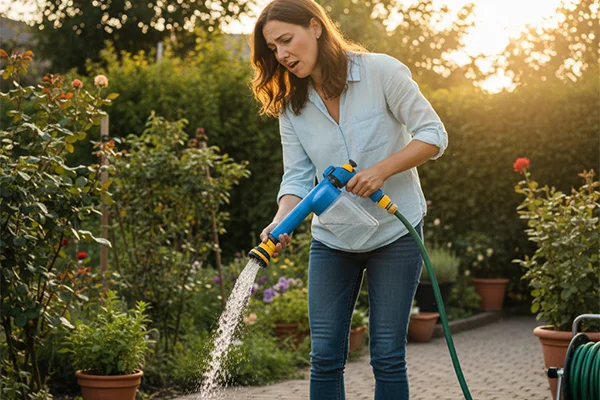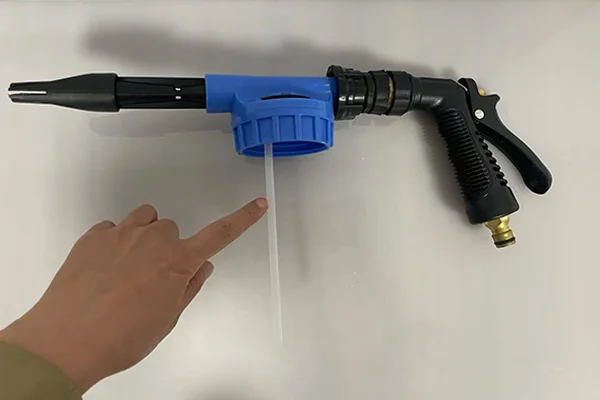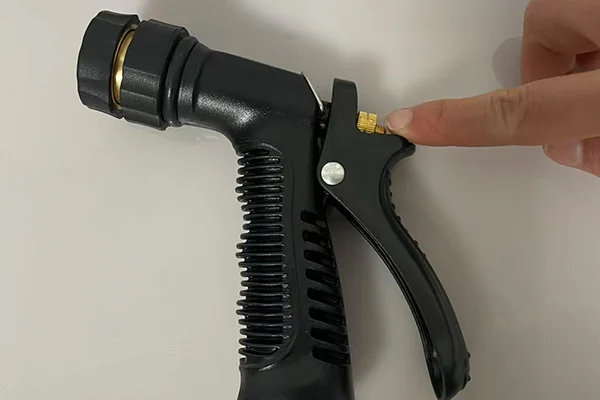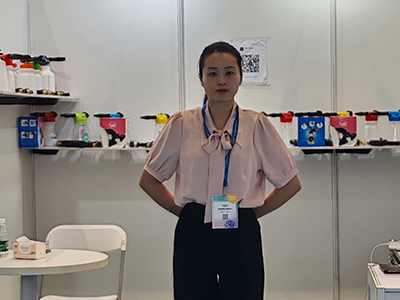Why does my foam gun not work?
You just bought a new foam gun1, filled it with your favorite car soap2, and aimed it at your car. But when you pull the trigger, only plain water comes out. You are left feeling confused and frustrated.
Your garden hose3 foam gun is likely not working because it requires running water to create suction, is missing its internal siphon tube4, or the handle's tension is too loose. It is not a manual pump sprayer.

As someone who has been manufacturing these tools for 15 years, I can tell you that 99% of the time, the gun isn't broken. The issue is usually a simple misunderstanding of how these devices actually work. They are very different from the pump sprayers you might use for gardening, which you pressurize by hand. A low-pressure foam gun5n](https://www.youtube.com/watch?v=_ROP-lBTrtY)%%%FOOTNOTE_REF_1%%% is a tool that relies entirely on the basic laws of physics—specifically, water pressure6 from your hose. Let’s walk through the three most common mistakes people make so you can get yours working perfectly in just a few minutes.
Does a foam gun need running water to work?
You’ve filled the bottle and screwed it on tightly, but no matter how you try, you can't get it to spray foam. You might even be looking for a pump handle that doesn’t exist.
Yes, a garden hose3 foam gun1 must be connected to a hose with the water turned on. The flow of water through the gun's head creates a vacuum that siphons soap from the bottle. It cannot produce foam without water pressure6.

The number one mistake I see is people thinking this is a manual pressure sprayer. They assume you should be able to pump it up by hand and then walk around spraying foam. This is not how it works. The entire foaming action is created by something called the "siphon effect7," or the Venturi effect8. When you turn on your garden hose3, water flows at high speed through a narrow channel inside the foam gun1's head. As the water speeds up, the pressure inside that channel drops, creating a small vacuum. This vacuum is what provides the suction to pull the soapy water up from the bottle below. Without the constant flow of water from your hose, there is no suction. And with no suction, the soap solution stays right where it is, at the bottom of the bottle. So, always remember: connect the hose and turn on the water first. The gun does the rest.
Did you forget to attach the siphon tube4?
You’ve correctly connected the hose and the water is running, but you are still just spraying plain water. You look at the canister and see the soap level hasn't gone down at all.
Your foam gun1 will not work if the plastic siphon tube4 is not attached to the nozzle inside the cap. This tube acts like a drinking straw, allowing the suction to pull the soap solution from the bottom of the canister.

This next issue is just as common and even simpler to fix. When we pack these foam gun1s at my factory, the clear plastic tube is often packed separately to prevent it from getting bent or broken in the box. This tube must be pushed firmly onto the small nozzle on the underside of the gun's head. Think of it exactly like using a straw to drink a beverage. You can’t drink the liquid at the bottom of a cup without a straw that reaches it. The foam gun works the same way. The siphon effect7 I mentioned earlier creates suction at the very top, inside the gun's head. The tube is the essential part that extends that suction down to the bottom of the bottle where the soap is. Some other types of sprayers might seem to work without a tube, but that's because they have a different design, perhaps one where the bottle needs to be full to work. For this design, no tube means no soap.
Is your foam gun's trigger too loose?
The foam is coming out, but it’s a weak, watery stream that barely sprays a few feet. You feel like there is no power behind it, and the foam quality9 is poor.
The spray pressure might be too low. Check the small adjustment knob, usually located behind the trigger, and turn it clockwise. Tightening this knob increases the trigger's tension, allowing the internal valve to open more fully.

If you are getting some foam, but it's very weak, the problem may lie with the trigger handle itself. On many models, there is a small metal or plastic knob on the back of the handle. This isn't just for decoration; it's a tension adjuster. Its purpose is to control how far the internal water valve opens when you squeeze the trigger. If this knob is turned too far counter-clockwise (loosened), the trigger will feel very light, and it won't open the valve completely. This restricts the water flow, which in turn reduces the power of the siphon effect7 and results in weak, dribbling foam. To fix this, simply turn that knob clockwise. You'll feel the trigger become a bit stiffer to squeeze. This increased tension ensures that when you pull the trigger, the valve opens all the way, allowing for maximum water flow and pressure. This creates a stronger siphon, pulling up more soap and projecting a more powerful stream of foam.
Common Foam Gun Problems & Solutions
| Problem | Likely Cause | Solution |
|---|---|---|
| No foam, only water sprays | The siphon tube is missing or detached. | Attach the clear plastic tube to the nozzle under the cap. |
| Nothing sprays at all | Water is not connected or turned on. | Connect a garden hose and ensure the water is flowing. |
| Weak foam, low pressure | The trigger handle tension is too loose. | Tighten the adjustment knob located behind the trigger. |
| Can't create pressure | Misunderstanding of the tool's function. | This is not a pump sprayer. It requires water pressure to operate. |
Conclusion
Your foam gun isn't broken. Ensure the siphon tube is attached, connect running water, and tighten the trigger knob. These three simple checks will solve almost any issue with a low-pressure foam gun.
Understanding the mechanics of a foam gun can help you troubleshoot and use it effectively. ↩
Find recommendations for car soaps that work best with foam guns for optimal results. ↩
Get tips on properly connecting a garden hose to ensure your foam gun works effectively. ↩
Learn about the siphon tube's role in creating foam and how to ensure it's properly attached. ↩
Discover the features and benefits of using a low-pressure foam gun for car washing. ↩
Discover how water pressure is essential for the operation of foam guns and their foaming action. ↩
Explore the siphon effect to understand how foam guns pull soap from the bottle. ↩
Learn about the Venturi effect and its significance in the operation of foam guns. ↩
Understand the factors that influence foam quality for better cleaning results. ↩
